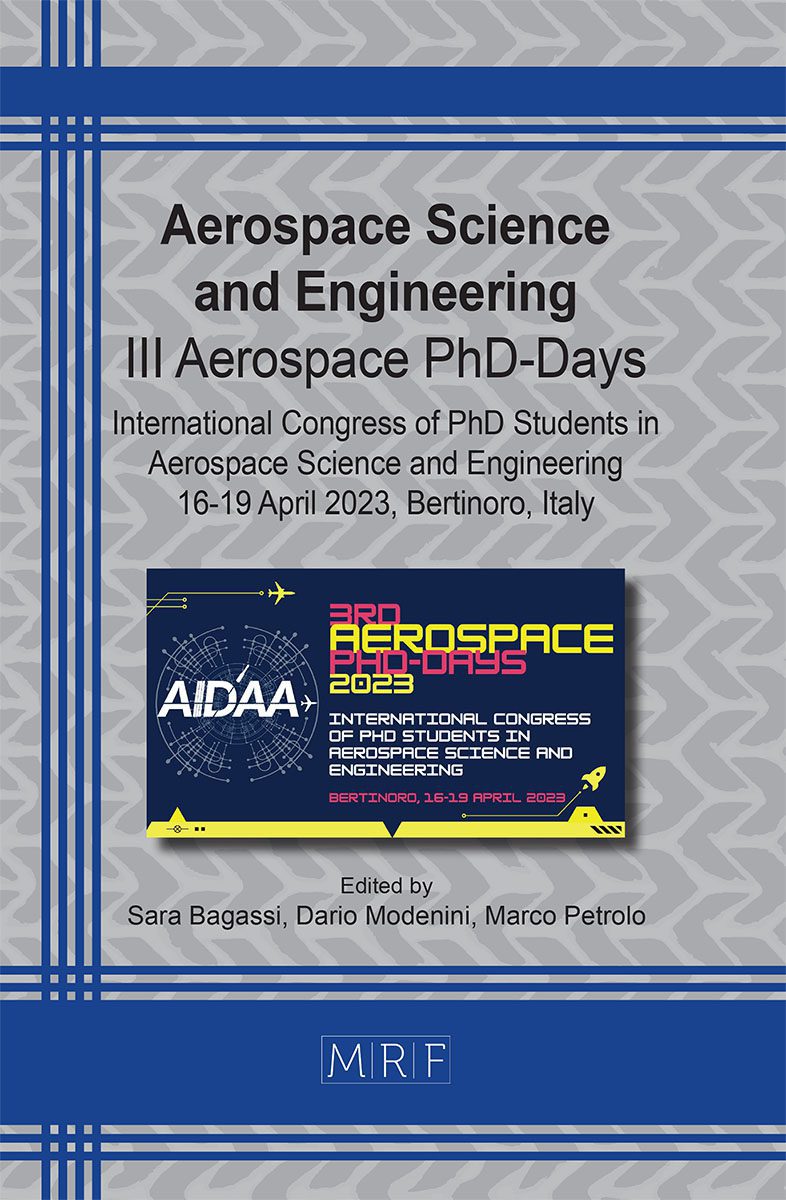Development of accurate fluid-structure interaction models for aerospace problems
Andrea Rubino, Marco Donato de Tullio, Dario De Marinis, Maria Cinefra
download PDFAbstract. The research program deals with fluid-structure interaction (FSI), a challenging field of engineering, with a practical application on aerospace problems such as the flutter, an instability problem due to aeroelastic excitations. The research goal is to find a suitable way to deal with flutter in such a way the two macro fields, fluid and structure, are modelled with mid to high-level accuracy. Moreover, the creation of an interface could be useful to study other problems, such as the cabin comfort for an aircraft. To do that, the research activity is firstly split in two to study in depth the structural and the fluid problem, then they are merged together through the interface analysis: the main problem is that each field has an own scale and the union of both requests a suitable modelling and analysis. After a preliminary study on the state of the art of fluid-structure interaction in literature, which forms the pillar of the research project, the structural field is analysed first. The study of the structure system is carried out on the Carrera Unified Formulation (CUF), which allows a reduced degrees of freedom model with the same accuracy of the classical Finite Element Method (FEM). Analysis on possible adaptive mesh methods is needed in order to match the proper scale at interface with fluid dynamics system. This work could be a milestone for future investigation in problems that need a mesh refinement, beyond the aeroelastic field. Then, the fluid system is studied and analysed through the Navier-Stokes equations. In particular, a Dual Time Stepping model for non-stationary Favre Average Navier-Stokes is used. More in general, considering different order of magnitude for the Reynold’s number, three different analysis could be done: Reynolds Average Navier-Stokes (RANS) for only large-scale eddies resolved and other components modelled, Large Eddy Simulation (LES) which adds the resolution of the flux of energy with respect to the previous simulation and Direct Numerical Simulation (DNS) which resolves also the dissipating eddies, so representing the best performing simulation but with very high computational cost. Finally, a complete simulation of fluid-structure interaction is performed to find the flutter velocity and study the induced vibrations from turbulent boundary layer to the aircraft cabin and/or to the rocket nose.
Keywords
Fluid-Structure Interaction, Finite Element Method, Carrera Unified Formulation, Adaptive Mesh
Published online 9/1/2023, 7 pages
Copyright © 2023 by the author(s)
Published under license by Materials Research Forum LLC., Millersville PA, USA
Citation: Andrea Rubino, Marco Donato de Tullio, Dario De Marinis, Maria Cinefra, Development of accurate fluid-structure interaction models for aerospace problems, Materials Research Proceedings, Vol. 33, pp 219-225, 2023
DOI: https://doi.org/10.21741/9781644902677-32
The article was published as article 32 of the book Aerospace Science and Engineering
![]() Content from this work may be used under the terms of the Creative Commons Attribution 3.0 license. Any further distribution of this work must maintain attribution to the author(s) and the title of the work, journal citation and DOI.
Content from this work may be used under the terms of the Creative Commons Attribution 3.0 license. Any further distribution of this work must maintain attribution to the author(s) and the title of the work, journal citation and DOI.
References
[1] Lin CC. 1955. The Theory of Hydrodynamic Stability. Cambridge, UK: Cambridge, Univ. Press. 155 pp.
[2] Dowell EH. 1971. Generalized aerodynamic forces on a flexible plate undergoing transient motion in a shear flow with an application to panel flutter. AIAA. J. 9 (5):834-41 https://doi.org/10.2514/3.6283
[3] Hall KC, Thomas JP, Clark WS. 2000. Computation of unsteady nonlinear flows in cascades using a harmonic balance technique. Presented at the Int. Symp. on Unsteady Aerodyn., Aeroacoust. and Aeroelast. of Turbomach., 9th, Ecole Centrale de Lyon, Lyon, France, Sept. 4-7, 2000.
[4] Silva WA. 1993. Application of nonlinear systems theory to transonic unsteady aerodynamic responses. J. Aircraft 30(5):660-68 https://doi.org/10.2514/3.46395
[5] Silva WA. 1997. Discrete-time linear and nonlinear aerodynamic impulse responses for efficient (CFD) analyses. PhD thesis. Coll. William Mary. 159 pp.
[6] Dowell, E. H., & Hall, K. C. (2001). Modeling of fluid-structure interaction. Annual review of fluid mechanics, 33(1), 445-490. https://doi.org/10.1146/annurev.fluid.33.1.445
[7] Carrera, E., Giunta, G., Petrolo, M., 2011. Beam Structures: Classical and Advanced Theories. John Wiley and Sons, pp. 45-63. https://doi.org/10.1002/9781119978565
[8] Carrera, E., 2003. Theories and finite elements for multilayered plates and shells: a unified compact formulation with numerical assessment and benchmarking. Arch. Comput. Methods Eng. 10 (3), 216-296. https://doi.org/10.1007/BF02736224
[9] Carrera, E., Giunta, G., 2010. Refined beam theories based on Carrera’s Unified Formulation. Int. J. Appl. Mech. 2 (1), 117-143. https://doi.org/10.1142/S1758825110000500
[10] Cinefra, M. (2021). Non-conventional 1d and 2d finite elements based on cuf for the analysis of non-orthogonal geometries. European Journal of Mechanics-A/Solids, 88, 104273. https://doi.org/10.1016/j.euromechsol.2021.104273
[11] Cinefra, M., & Rubino, A. (2022). Adaptive mesh using non-conventional 1D and 2D finite elements based on CUF. Mechanics of Advanced Materials and Structures, 1-11. https://doi.org/10.1080/15376494.2022.2126039































